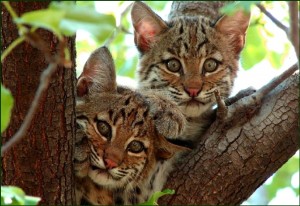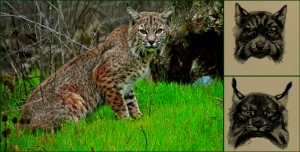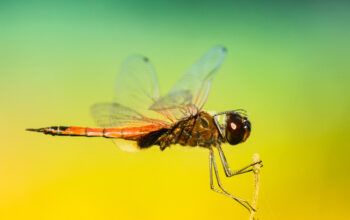
The bobcat (Lynx rufus) is a member of the cat family Felidae, and it ranges from southern Canada to northern Mexico, and most of the continental U.S. In southern Louisiana, the bobcat is an adaptable predator, living in wooded areas, swampland, and suburban environments. The bobcat is about twice as large as the domestic cat with a gray to brown coat, whiskered face, and black-tufted ears. The bobcat gets its name from its black-tipped, stubby tail, and it is on average the smallest of the four species of its genus. Adult bobcats stand 1-2 feet at the shoulders, and males average 21 lbs. while females average 15 lbs.
L. rufus breeds from winter into spring with a gestation period of about two months; kittens are born well-furred and with spots. The bobcat is largely solitary, but the range of males will often overlap. Females, however, rarely wander into the range of other females. A successful hunter, the bobcat adjusts its habits with regard to the activity of its prey, generally rabbit, hare, mice, squirrels, birds, fish and insects.
Native American mythology often pairs the bobcat with the coyote, as the lynx and the coyote are associated with the fog and the wind, respectively. In this pairing, the two represent opposites, giving rise to a fluid type of dualism. As the fog and the wind are opposites, they both can offer advantages or disadvantages, depending on the situation. Dreams of the cougar, bobcat and lynx are thought to be indicative of superior hunting and stealth capabilities. European settlers admired the cat for both its ferocity and grace.




